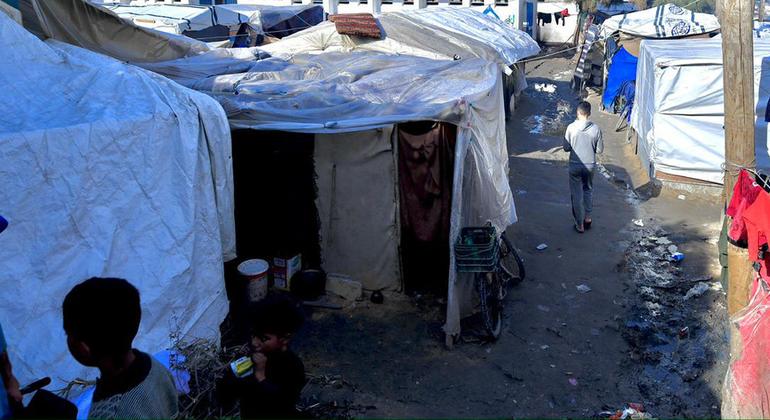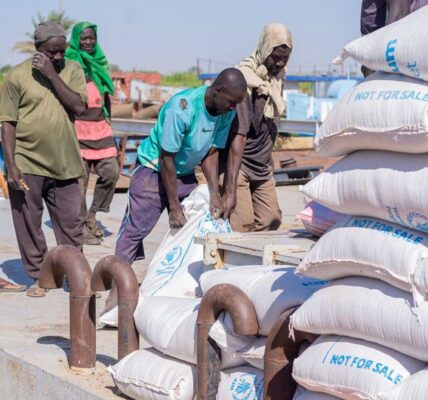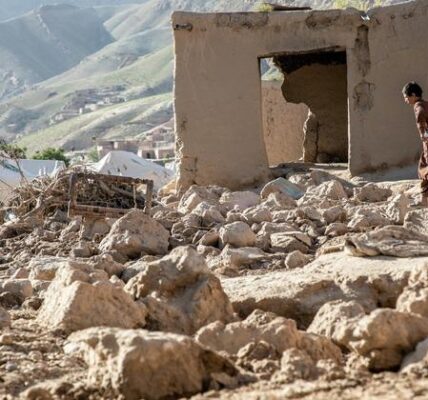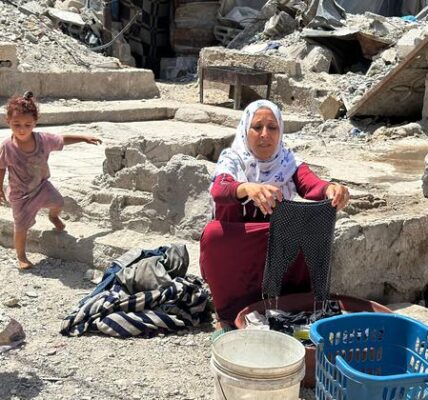Healthcare workers in Gaza are facing extreme challenges as they struggle to cope with the devastating impact of ongoing airstrikes.

According to Sean Casey, the coordinator for Emergency Medical Teams at the World Health Organization (WHO), approximately 100 patients were rushed to Al-Aqsa Hospital within half an hour on Monday due to reported explosions near Al-Maghazi refugee camp.
The WHO representative informed UN News that all of them required immediate medical attention for severe injuries. Additionally, approximately 100 deceased bodies were also delivered to the hospital at a similar time.
Trapped under the rubble
The United Nations’ Office of the High Commissioner for Human Rights (OHCHR) shared its serious worries on Tuesday regarding the continued and forceful bombing of central Gaza, with over 50 attacks carried out by the Israeli Defense Forces.
OHCHR reported that more than 100 Palestinians have been killed in attacks since December 24. This is especially worrying because Israeli forces have instructed residents of the southern area of Wadi Gaza to relocate to Middle Gaza and Tal al-Sultan in Rafah.
According to a statement from OHCHR spokesperson Seif Magango, three refugee camps – Al Bureij, Al-Nuseirat, and Al-Maghazi – were struck. The statement reports that in Al-Maghazi camp, two strikes hit seven residential buildings, resulting in the death of approximately 86 Palestinians and numerous injuries. There are also individuals believed to be still trapped under the debris, but the exact number is unknown.
Tedros ire
On X (previously known as Twitter), the Director-General of the World Health Organization, Tedros Adhanom Ghebreyesus, strongly denounced the devastation caused by Israeli airstrikes as a response to the 7 October terrorist attacks carried out by Hamas on communities in southern Israel. The attacks resulted in the deaths of 1,200 individuals and the capture of 240 others.
The leader of WHO expressed deep concern over the overwhelming pressure placed on the limited number of operational hospitals in Gaza due to the escalating conflict. The majority of the healthcare system has been severely damaged and is struggling to cope.
On social media, Mr. Casey, representative of the WHO, characterized the events at Al-Aqsa Hospital as a “massacre”. He drew attention to a nine-year-old boy named Ahmed, who was critically wounded and lying on the hospital floor after being caught in a blast while crossing the street near Nuseirat.
“It’s a massacre.”
He remarked that they have witnessed individuals of all ages and genders, including children, women, and both young and elderly men and women, suffering from severe bleeding. He also pointed out the difficulty in transferring these patients to other facilities for urgent medical care.
Currently, the hospitals are filled with blood. The only cases we are receiving are trauma cases, and at a staggering rate. It is a scene of extreme violence, as we have mentioned before, and it is complete chaos.
The recent events in Gaza’s central region have prompted a joint visit from the World Health Organization and the United Nations Office for the Coordination of Humanitarian Affairs on Christmas Day to Al-Aqsa Hospital to evaluate the necessary aid.
Despite having enough medical supplies and fuel to power generators, Mr. Casey verified that Al-Aqsa Hospital was receiving a higher number of patients than it could accommodate, resulting in the unfortunate reality that some injured individuals may not make it while waiting for treatment.
The WHO representative spoke from the UN Joint Humanitarian Operations Centre in Rafah, located in the southern area of the Gaza Strip. This facility also serves as a medical center. The situation was occurring throughout the entire region.
Battling throughout the night
“There’s nowhere actually safe in Gaza,” he continued. “Right now in Rafah outside the door of this building, 50 metres from where I am sitting right now, there’s a camp of thousands of people who have been settled here…They’re in plastic shelters, plastic sheeting shelters right outside the door. And last night, we heard fighting almost all night long with reports coming in during the day today of many, many injuries presenting to the hospitals here in the south.”
The current hospital capacity in Gaza is only 20% of its pre-7 October level due to the recent escalation. According to a WHO representative, most hospital services are no longer operational. This is either due to damage to the facilities, staff evacuation, lack of electricity or medical supplies, or restricted staff access.
Waiting to die
Providing an update about gravely ill patients in northern Gaza who he said previously were “waiting to die” in a church in the grounds of one hospital, Mr. Casey said that many were still “sleeping on pews” on Monday. The level of destruction “is so incredible, is so significant the roads are full of rubble”, he continued, highlighting the logistical difficulties of reaching the most vulnerable.
The speaker stated that efforts to relocate these patients must continue, but the choices are becoming increasingly restricted due to the difficulty of accessing health facilities and the displacement of health workers.
The Ministry of Health in Gaza reports that the current escalation has resulted in an estimated 20,000 fatalities.
Additionally, according to the UN Office for the Coordination of Humanitarian Affairs (OCHA), there has been a significant increase in the demolition of Palestinian properties and subsequent displacement in the neighboring occupied West Bank, reaching an all-time high.
The most recent information from OCHA shows that 1,094 buildings have been destroyed this year, causing 2,127 people to be displaced. This is the highest number on record, equaling the number in 2016 when over 1,500 people were forced to leave their homes.
Source: news.un.org



